I’ll never forget the panic that set in when we found out baby number three was on the way. Our second bedroom was already maxed out, and the thought of shuffling everyone around made my head spin. You know that feeling when you walk into a room and realize there’s just no way everything’s going to fit? That was me, staring at two toddler beds and a crib, doing mental gymnastics that would make an Olympic athlete jealous.
When a new baby joins the family, something’s got to give. Usually, that something is the sleeping arrangements. Your toddler who’s been cozy in that crib suddenly needs to graduate to a big kid bed, and you’re left wondering where on earth you’re going to put everyone. If you’re anything like most parents I know, you’ve probably measured your kids’ bedroom about seventeen times, moved furniture around in your head, and maybe even sketched out floor plans on napkins during dinner.
This is where bunk beds start looking pretty appealing. They’ve been around forever, and there’s a good reason for that. When you stack beds vertically instead of spreading them across your floor, you suddenly have room to breathe. Maybe even room for a toy box or a reading nook. The market is flooded with options now, everything from simple wooden frames to elaborate castle designs that make you wish you were a kid again.
But here’s the thing that keeps me up at night. Not all bunk beds are created equal, and some of them honestly scare me. I’ve seen models with wobbly ladders, guardrails that look like they were designed by someone who’s never met a child, and gaps big enough to trap little limbs. The truth is, while bunk beds solve one problem, they can create another if you’re not careful about what you’re buying.
Walking through furniture stores, I’ve watched sales associates push the cheapest models with the fanciest designs. They talk about how much kids will love the spaceship theme or the pink princess tower, but they barely mention weight limits or safety certifications. That bothers me. A lot. We’re talking about where our children sleep, where they’ll spend a third of their childhood, and where they’ll inevitably jump around despite our best efforts to stop them.
The space saving feature is real, don’t get me wrong. When you reclaim that floor space, it changes the whole dynamic of a shared bedroom. Suddenly there’s room for both kids to play without constantly stepping on each other. There’s space for a small desk when homework time rolls around. You might even be able to keep the door open without it hitting a bed frame. These are real benefits that make daily life easier for everyone.
But I’ve learned that convenience can’t come at the cost of safety. Every time I hear about a kid getting hurt from a bed, my stomach drops. These aren’t rare freak accidents we’re talking about. They happen more often than any parent wants to think about. And while we can’t bubble wrap our kids or prevent every bump and bruise, we can absolutely make smarter choices about the furniture we bring into our homes.
The variety in today’s market is both a blessing and a curse. You can find bunk beds in twin over twin, twin over full, full over full, and even triple bunks if you’re really cramped for space. Some have built in desks underneath. Others come with storage drawers in the stairs. There are models that convert into two separate beds when you eventually have more space. The options go on and on, and each one promises to be the perfect solution for your family.
What most manufacturers don’t advertise as prominently are the safety features, or lack thereof. They’ll show you the cool slide attachment or the tent canopy, but they won’t always point out whether the bed has been tested to meet safety standards. They might not mention that the guardrails are an inch too short or that the spacing between slats doesn’t meet recommendations. This stuff matters, probably more than whether the bed comes in white or espresso finish.
I’ve talked to enough parents who’ve dealt with bunk bed injuries to know this isn’t just me being paranoid. Broken arms from falls. Concussions from jumping mishaps. Fingers caught in poorly designed mechanisms. These stories are out there, and they’re preventable. Not by avoiding bunk beds altogether, because let’s be real, sometimes they’re the only practical option. But by being informed, picky, and willing to spend a bit more for quality construction.
So yeah, when you’re staring down the reality of needing to fit multiple kids into one room, bunk beds make sense. They’ve solved the space problem for countless families, including mine eventually. But going into that purchase with your eyes wide open, knowing what to look for and what to avoid, makes all the difference between a great solution and a disaster waiting to happen.
Why Bunk Beds Are Actually Dangerous and What That Means for Your Kids
Let’s just say it out loud. Kids fall from bunk beds. Like, a lot. If you ask any pediatrician or emergency room nurse, they’ll tell you they see these cases regularly. It’s become almost expected, which is weird when you think about it. We’ve collectively decided that elevated sleeping surfaces for active, sometimes reckless little humans are fine, and we’ve just accepted that tumbles are part of the deal. That acceptance bothers me more than I can say.
I remember visiting my sister when her oldest broke his arm falling from the top bunk. He wasn’t even sleeping. It was Saturday morning, and he was trying to leap from the top bed onto a pile of pillows on the floor. Because that’s what seven year olds do. They see their bed as a jungle gym, a fort, a spaceship, and occasionally a place to sleep. My sister felt terrible, kept saying she should have known better, should have been watching more carefully. But here’s the reality: you can’t watch them every second.
The data backs up what we all kind of know instinctively. Playing causes way more bunk bed injuries than actual sleeping does. Kids jump. They climb up and down repeatedly. They hang off the sides. They try to climb the outside of the ladder instead of using the rungs properly. They push and shove their siblings. They treat guardrails like monkey bars. And all of this happens at heights where a fall can cause real damage.
When your kid is sleeping on a mattress that sits two or three feet off the ground, a fall might result in a bruise or a scared cry in the middle of the night. When that same kid falls from five or six feet up, we’re talking about potential broken bones, head injuries, or worse. The physics are simple and terrifying. Greater height means more force on impact. More force means more damage to little bodies that are still growing and developing.
I’ve heard people say that kids are resilient, that they bounce back from injuries quickly. And sure, bones heal faster in children than adults. But that doesn’t mean we should be cavalier about putting them in situations where injuries are more likely. Resilience isn’t an excuse for preventable harm. It’s like saying you don’t need to buckle your kid’s seatbelt because children heal quickly. The logic falls apart pretty fast when you actually think about it.
The jumping thing is what gets me most. You can tell your kids a thousand times not to jump on the bed. You can explain the dangers, show them videos, make them promise, put up rules on the wall. And they’ll still do it. Maybe not when you’re standing right there, but the second you leave the room or get distracted making dinner, someone’s going to test the bounce factor. It’s not that they’re bad kids or that you’re a bad parent. It’s just that kids have terrible impulse control and a seriously underdeveloped sense of danger.
My friend’s pediatrician told her something that stuck with me. He said every time he sees a bunk bed injury, he asks the parents whether the kid was sleeping or playing. In over a decade of practice, he could count on one hand the number of times the injury happened during actual sleep. The rest? All playing. All preventable in theory, if kids just followed the rules. But kids don’t follow rules consistently, especially not when those rules limit fun.
This is where the height of the bunk becomes really important. The lower the top bunk sits, the less devastating a fall will be. It won’t eliminate injuries completely, nothing can do that, but it can mean the difference between a scraped knee and a fractured skull. When you’re looking at bunk beds, that height measurement matters more than the color, the style, or any fancy add ons. It’s literally a matter of how far your child will fall when, not if, something goes wrong.
I know this all sounds scary and maybe even a bit preachy. I’m not trying to terrify anyone or suggest that bunk beds are inherently evil. They’re not. They’re furniture. But they’re furniture that comes with real risks, and pretending those risks don’t exist doesn’t help anyone. What helps is going into the decision with clear eyes, understanding what could happen, and taking every possible step to minimize the danger.
Some families hear all this and decide bunk beds aren’t worth it. They figure out other solutions, move to a bigger place, or just accept that their kids’ room is going to be crowded for a few years. That’s completely valid. But for those of us who need or want bunk beds, being informed about the risks means we can make smarter choices. We can pick safer models, set stricter rules, and stay vigilant about how our kids are using the bed.
The bottom line is this: falls from bunk beds are common enough that we need to take them seriously. They’re not rare flukes. They’re predictable outcomes of putting active kids in elevated spaces. And since playing causes most of these accidents, we can’t just assume everything will be fine as long as everyone’s tucked in at bedtime. We need to think about how these beds will be used all day long, every day, for years. That perspective changes what features matter and what risks we’re willing to accept.
Making Sure Your Bunk Bed Won’t Collapse Under Your Kids
The first thing you need to check, before you even think about style or color or whether it matches the rest of the room, is whether the bed is actually sturdy. I mean really sturdy, not just “feels okay when I shake it a little” sturdy. We’re talking about a piece of furniture that needs to hold the weight of one or two kids, absorb constant movement, survive the occasional jumping session that happens when you’re not looking, and stay intact for years. That’s a tall order.
Here’s a test I learned from a furniture maker who specializes in kids’ beds. You stand next to the bunk, put your foot against the base of the bed frame, and pull toward yourself. Not gently, either. Pull hard enough that you’re actually trying to move it. If you can lift any of the posts off the ground, even slightly, that bed isn’t stable enough. It doesn’t matter how strong you are or aren’t. A bed that can be shifted that easily is a bed that won’t hold up to daily use from energetic kids.
I tried this test on about a dozen different bunk beds before we bought ours. You’d be shocked how many failed. These weren’t cheap, flimsy models from questionable websites. These were beds from major retailers, some of them priced at several hundred dollars, that lifted right off the ground when I did the pull test. The sales guy at one store actually got defensive when I pointed it out, told me that all beds have a little give. Yeah, no. Give is one thing. Actually moving is another.
The construction method matters more than you’d think. Beds held together primarily by screws and bolts can loosen over time. Kids are rough on furniture. They bang into it, shake it, put stress on joints in ways the designer never imagined. Those screws work themselves loose, and suddenly a bed that was stable six months ago is wobbling like a carnival ride. The best bunk beds use a combination of techniques: thick bolts, reinforced corners, and sometimes even interlocking pieces that don’t rely solely on hardware.
Weight capacity is another spec that gets glossed over or buried in fine print. Most bunk beds list a weight limit for the top bunk, and it’s usually lower than you’d expect. Some top bunks max out at 150 or 175 pounds. Now think about your growing kid, maybe some stuffed animals, blankets, and the possibility that a friend might climb up there during a sleepover. That weight adds up fast. You want a bed with capacity to spare, not one that’s already pushing its limits with just your child on it.
Material quality plays a huge role in stability. Solid wood is generally sturdier than particle board or MDF, but even within solid wood, there are differences. Pine is softer and can show wear more quickly. Hardwoods like oak or maple are tougher but also heavier and more expensive. Metal frames can be incredibly strong if they’re made from thick gauge steel, but thin metal tubing? That’s just asking for problems. You can usually tell quality by weight. If the bed feels surprisingly light, that’s a red flag.
I’ve seen too many parents get swayed by looks over substance. They find a bed with the perfect theme, maybe it’s got a cool tent cover or matches a favorite character, and they don’t think enough about whether it’s actually well made. I get it. You want your kid to be excited about their new bed. But no amount of aesthetic appeal is worth a bed that could fail when your child needs it to be safe. Function has to come before form, especially with something as basic as where your kid sleeps.
Assembly quality matters too. Even the sturdiest bed can become unstable if it’s not put together correctly. Those instruction manuals that come with furniture? Actually read them. Follow every step. Use all the provided hardware. Tighten everything as much as possible. And then, a few weeks after assembly, check everything again. Go around with a screwdriver and make sure nothing’s loosened up. This isn’t one and done maintenance. It’s ongoing.
One thing that surprised me is how much room layout affects stability. A bunk bed pushed against two walls is going to be more stable than one sitting in the middle of the room. The walls provide bracing that helps prevent tipping or shifting. If your room layout allows for it, positioning the bed in a corner adds a layer of stability that the bed’s construction alone might not provide. Little things like this compound to create a safer overall setup.
The truth is, testing a bunk bed for stability isn’t complicated or time consuming. It takes maybe two minutes in a showroom or even at home after assembly. But those two minutes of checking can save you from injuries, from the stress of dealing with a broken bed, and from the guilt that comes with realizing something was preventable. We test car seats before we buy them. We check reviews on strollers. Why would we be any less careful with beds?
When you find a bed that passes the stability test, that can handle the weight you need it to, that’s made from quality materials, and that’s properly assembled, you’re already miles ahead in the safety game. Stability is the foundation everything else builds on. Without it, none of the other safety features matter because the whole structure is compromised. With it, you’ve got a solid base that can actually keep your kids safe night after night, year after year.
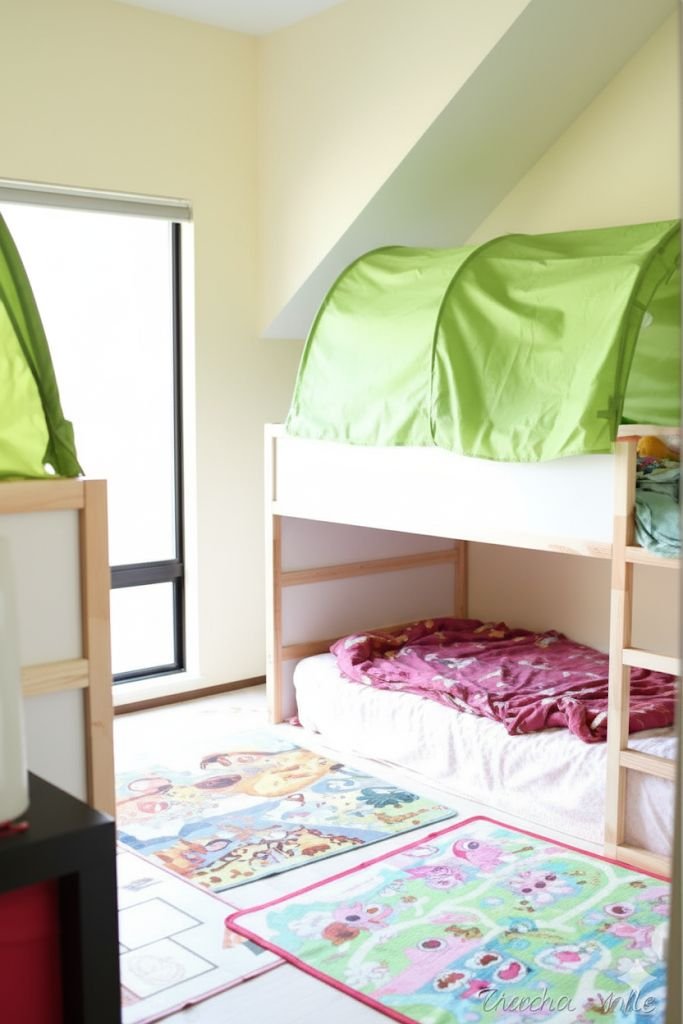
The Height Question That Could Save Your Kid from Serious Injury
Can we talk about how high some bunk beds sit? I’ve seen models where the top mattress is nearly as tall as I am. I’m five foot seven. That means a kid sleeping up there is closer to the ceiling than the floor, and the fall distance if something goes wrong is legitimately frightening. When I ask why beds are built that high, the answer usually comes down to storage or style, neither of which seems like a good enough reason when we’re talking about safety.
There’s an actual recommended maximum height for the top of the upper mattress, and it’s 1550 millimeters. That’s about 61 inches, or just over five feet. This isn’t some arbitrary number pulled out of thin air. It’s based on research about fall injuries and what heights are most likely to cause serious harm versus minor injuries. Stay under that height, and you’re reducing the risk that a fall will result in broken bones or head trauma.
Think about it from a physics standpoint. Every additional inch of height increases the speed at which a falling child will hit the ground. It increases the force of impact. It increases the likelihood that they’ll hit something on the way down, like the edge of the bottom bunk or a nightstand. Lower bunks might not completely eliminate injuries, but they absolutely reduce severity. And when we’re talking about our kids, reducing severity from a possible skull fracture to a nasty bruise is a huge win.
I measured the bunk beds in several furniture stores just out of curiosity, and you know what I found? About half of them exceeded that 1550mm recommendation. Some by just a few inches, others by nearly a foot. When I pointed this out to sales staff, most of them had no idea there even was a recommended height limit. They’d been selling these beds for years without knowing this basic safety information. That’s terrifying when you think about it.
The counter argument I hear sometimes is that taller beds look better or that they maximize storage space underneath. Sure, a higher bunk means you can fit larger storage drawers or even a desk under the bottom bunk. That’s convenient. But convenience at what cost? Is a few extra inches of storage worth the increased risk to your child? When I frame it that way, the answer becomes pretty obvious.
What really gets me are the triple bunk beds or the models with a loft bed way up top. These things put kids at heights that make me dizzy. I’ve stood next to them in stores and imagined my son up there, and my palms start sweating. Sure, they solve extreme space constraints, and maybe in some situations they’re the only option. But man, the risk calculation on those seems way off to me. The space you save isn’t worth the potential for serious injury.
There’s something else about lower bunks that doesn’t get talked about enough. They’re easier for parents to access. If your kid gets sick in the middle of the night, if they have a nightmare and need comforting, if you just want to check on them before you go to bed, a lower bunk makes all of that simpler and safer. You’re not climbing up some rickety ladder in the dark, hoping you don’t fall yourself. You’re not struggling to reach them or risking waking them up because you’re making so much noise trying to get up there.
Lower bunks are easier for kids to navigate too. That midnight bathroom trip isn’t as scary when you only have to climb down three feet instead of five or six. Making the bed becomes doable instead of a frustrating chore. Changing sheets doesn’t require the flexibility of a gymnast. These practical, day to day considerations matter when you’re living with a bunk bed for years.
I know some kids think the higher the better. Being way up top feels exciting, like they’re in a treehouse or a special hideout. And I get that appeal. But as the adult making the purchasing decision, we have to balance what’s fun against what’s safe. Kids also think it would be fun to eat candy for every meal, but we don’t let them do that either. Sometimes being the responsible adult means choosing the less exciting option that keeps everyone safer.
The good news is that plenty of bunk beds are designed with safety conscious heights. You don’t have to sacrifice style or quality to get a bed that sits lower. There are beautiful, well made options that keep kids closer to the ground. You just have to prioritize this feature when you’re shopping. Make it non negotiable. If a bed exceeds that 1550mm mark, move on to the next option, no matter how perfect it seems in other ways.
When you bring a bunk bed home, measure it. Don’t just trust what the product description says. Measure from the floor to the top of the upper mattress when it’s fully made with all your bedding. If it’s too high, you can sometimes use a thinner mattress to bring it down. You can skip the box spring if one was included. There are adjustments you can make to improve the situation even after purchase. The height matters that much, so it’s worth the extra effort to get it right.

All the Design Features That Keep Kids from Getting Hurt
Design details that seem small or obvious can make a massive difference in whether a bunk bed is safe or dangerous. I’m talking about things like how the ladder attaches, where the guardrails are positioned, whether there are any protrusions that could catch clothing or worse, trap a child’s head or limbs. This stuff isn’t glamorous or exciting, but it’s absolutely necessary when you’re evaluating options.
Let’s start with hanging points. These are spots where clothes, cords, or even necklaces could get snagged. Imagine a kid wearing a hoodie with drawstrings, climbing down the ladder at night, and one of those strings catches on a protruding bolt or decorative element. That’s a strangulation risk. Or picture a charging cable from a phone or tablet getting caught while a kid is asleep and rolling over. These scenarios are rare but possible, and good bed design eliminates these hanging points completely. Smooth edges, recessed hardware, nothing sticking out where it shouldn’t be.
Gaps and holes are another major concern. The spaces between ladder rungs, the distance between slats on the bottom bunk, any decorative cutouts in the headboard or footboard, all of these need to be the right size. Too big, and a head or limb can slip through and get trapped. There are specific size limits based on child safety research. Openings should either be too small for any body part to fit through or large enough that a whole body could fit through without getting stuck. It’s that middle range that’s dangerous.
Guardrails are probably the most debated feature of bunk beds. Some people think you only need them on the open side of the bed, the side away from the wall. They figure the wall will prevent falls on that side. But here’s what actually happens: kids scoot down between the bed and the wall. They get wedged in that gap. They can’t get themselves out and they panic. In the worst cases, they can actually suffocate if they end up in a position where they can’t breathe properly. This is why safety standards now recommend guardrails on both sides, wall or no wall.
The guardrails themselves need to be high enough that a sleeping or even a playing child won’t easily roll or climb over them. There are minimum height requirements, usually around 5 inches above the top of the mattress. But honestly, higher is better if you can get it. Those extra inches could be the difference between a near miss and a fall. And the rails need to be sturdy, not something a kid could push out of place or break by leaning on them too hard.
Speaking of guardrails, the release mechanism matters if the bed has removable rails. Some designs let you take the rails off as kids get older. That’s fine in theory, but the mechanism that holds them in place needs to be secure enough that a child can’t accidentally release it. I’ve seen beds where the rail attachment is basically just a couple of hooks that could come loose with enough jostling. That’s not secure. You want something that locks positively, ideally with a latch or mechanism that requires deliberate adult action to release.
Mattress thickness is something people rarely consider until after they’ve bought the bed and the mattress separately. The bed manufacturer assumes a certain mattress height when they design the guardrails. If you buy a mattress that’s too thick, the top surface ends up much closer to the top of the guardrails, defeating their purpose. Most beds come with a mattress height indicator or recommendation. Follow it. Don’t think you’re doing your kid a favor by buying them the plushest, thickest mattress you can find if it compromises the safety rails.
The ladder design and attachment deserves serious attention. Some ladders hook over the side of the bed but aren’t secured in any other way. Those can shift or even fall off completely. Better designs have the ladder bolted or screwed into the bed frame so it can’t move. The angle of the ladder matters too. Nearly vertical ladders are harder to climb, especially for younger kids or in the dark. A slight angle is easier and safer. And the rungs themselves should be wide enough to comfortably fit a foot, with texture or tread so they’re not slippery.
You’d think bed manufacturers would get all this right by default, but they don’t. I’ve seen beds from well known brands that have obvious design flaws. Decorative elements that create hanging points. Gaps that are clearly in the danger zone for trapping limbs. Guardrails that wobble when you touch them. It’s maddening when you realize these products passed whatever testing or approval process was required and still ended up on store shelves with these problems.
One thing I started doing when shopping was physically checking every detail I could reach. I stuck my arm through gaps to see if it would get stuck. I tried to wiggle guardrails. I tested the ladder’s attachment by putting weight on it and trying to shift it side to side. I looked for any sharp edges or points that could cause cuts or scrapes. Sales staff probably thought I was weird, but I didn’t care. This is my kid’s safety we’re talking about. A few minutes of thorough inspection in the store could prevent years of worry or an actual injury at home.
The bottom line is that good design in a bunk bed isn’t about aesthetics. It’s about thinking through every possible way a child might use or misuse the bed and engineering solutions that keep them safe in all those scenarios. It’s about following established safety standards, not just the bare minimum legal requirements but best practices developed over decades of research and real world experience. When you find a bed that gets all these details right, you know you’ve found something worth buying.

Other Options When Bunk Beds Feel Too Risky
I get it. After reading all this stuff about bunk bed safety, you might be thinking there’s no way you’re putting your kids in one. That’s completely fair. The risks are real, and if you can find another solution that works for your space and your family, that’s probably the smarter move. Trundle beds are one alternative that gives you some of the space saving benefits without the height danger.
A trundle bed is basically a regular bed with a second mattress that slides underneath it. During the day, you push the lower bed under the upper one, and you’ve got floor space back. At bedtime, you pull it out, and both kids have a place to sleep. The beauty of this setup is that both sleeping surfaces are close to the ground. A fall from a trundle bed is going to result in less injury than a fall from even a low bunk bed.
The space savings aren’t quite as dramatic as with a bunk bed. You still need floor space to pull out that lower bed at night. But during the day, when kids are playing and need room to move around, you’ve got that space available. And honestly, that daily usability matters. Kids spend way more time awake in their room than asleep, so optimizing for daytime use makes sense.
Trundle beds are also easier to make and clean. You’re not climbing ladders with armfuls of sheets or trying to tuck in blankets while balancing on the side of a top bunk. Everything is at a manageable height. This might seem like a small thing until you’re the one doing it every week, and then it becomes a quality of life issue that affects how you feel about the whole sleeping arrangement.
The durability question with trundles comes down to the wheels and the frame. The bed that rolls in and out needs to do so smoothly on wheels or casters that won’t break or get stuck. The frame needs to be strong enough to handle being moved daily without falling apart. Cheap trundles with plastic wheels and flimsy frames are going to frustrate you within months. Invest in something solid, and it’ll last.
One drawback to consider is that the lower bed on a trundle is usually pretty close to the floor. Some kids don’t mind this, but others feel like they’re sleeping on the ground and don’t love it. There are pop up trundle beds that raise to the same height as the main bed, creating a kind of king size sleep surface. These are great for sleepovers or if you have twins who want to sleep next to each other. But they also take up more space and are a bit more complex mechanically.
If neither bunk beds nor trundles feel right, you might need to get creative with room layout. Sometimes rotating beds 90 degrees opens up space you didn’t know you had. Sometimes putting a bed in an alcove or under a window that you thought wouldn’t work actually does. I’ve seen families use room dividers to create separate sleeping zones in a shared room, making it feel less crowded even with two full size beds.
Loft beds are another category to consider, though they come with their own risks since they’re elevated. A loft bed is essentially the top bunk without a bottom bunk, leaving the space underneath open for a desk, storage, or play area. If you’ve got one child who needs to be elevated and you want to maximize space, a loft can work. But all the safety concerns about height and falls still apply, so you need to be just as careful about construction and design as you would with a full bunk.
Age plays a huge role in deciding what’s appropriate. The commonly cited guideline is that kids under nine years old shouldn’t sleep on the top bunk. And that’s backed up by injury data. Younger kids have worse coordination, less developed spatial awareness, and poorer judgment about risk. They’re more likely to fall and more likely to do something dangerous while playing on or around the bed. If all your kids are under that age threshold, a bunk bed probably isn’t the right choice, period.
By the time kids hit 12, the rate of bunk bed related injuries drops significantly. Older kids have better motor control, they’re more aware of danger, and they’re generally better at following safety rules. They’re also usually past the phase where they think jumping off furniture is the height of entertainment. This doesn’t mean 12 year olds can’t get hurt on bunks, but the risk profile changes enough that it becomes more reasonable to consider.
The space issue is real, and I don’t want to minimize it. If you’re in a situation where bunk beds or trundles or lofts feel like the only options, you’re probably right. Not everyone can move to a bigger place or give each kid their own room. Financial realities, housing markets, family circumstances, all of these factors constrain our choices. The goal isn’t to make anyone feel guilty about needing space saving furniture. It’s to make sure that whatever choice you make is as safe as possible.
What I’ve learned from talking to lots of parents in similar situations is that there’s usually more flexibility than we initially think. Maybe the kids can share a room for a few more years and the office becomes a bedroom. Maybe you can rearrange the living areas to free up another sleeping space. Maybe a creative loft solution or a daybed with storage underneath does what you need without the full bunk bed setup. It’s worth sitting down and really brainstorming before defaulting to a bunk.
At the end of the day, you know your kids better than anyone. You know their activity levels, their safety awareness, their tendency to take risks or follow rules. You know your space constraints and your budget limitations. All of this information factors into what the right choice is for your family. There’s no universal right answer, but there is a right answer for your specific situation, and it’s worth taking the time to figure out what that is.

Wrapping Up the Safety Conversation About Kids’ Beds
Kids need space to play, to move around, to be kids. That’s not negotiable. When you’re working with limited square footage and multiple children, furniture that saves space becomes really appealing. Bunk beds and trundles have been helping families solve this problem for generations, and there’s a reason they’re still popular. They work. They create room where there wasn’t room before. They let siblings share space without feeling completely cramped.
But that functionality can’t come at the expense of safety. We can’t just buy whatever looks good or fits the budget and hope for the best. The stakes are too high. A child’s bed is where they’ll spend thousands of hours over years of their childhood. It needs to be a place where they’re safe, where we can tuck them in at night without worrying that something could go wrong before morning.
The good news is that safe options exist. Beds that are stable and strong, that sit at reasonable heights, that have proper guardrails and thoughtful design details, these aren’t unicorns. They’re out there. You might have to look harder for them. You might have to pass on the cute theme bed that’s poorly constructed in favor of something more basic but safer. You might have to spend a bit more money. But these are investments worth making.
I think about safety in layers. The first layer is choosing the right bed in the first place. That’s what most of this article has been about. Picking something that’s well made, appropriately sized, and designed with kids’ actual behavior in mind. The second layer is positioning and setup. Putting the bed in the safest spot in the room, assembling it correctly, checking it regularly for wear or loosened parts. The third layer is rules and supervision. Teaching kids how to use the bed safely, enforcing rules about no jumping or rough play, and keeping an eye on how they’re actually using it day to day.
None of these layers alone is enough. You need all three working together. The safest bed in the world can still cause injury if it’s badly assembled or if kids are allowed to treat it like playground equipment without any consequences. The strictest rules won’t help if the bed itself is poorly made and structurally unsound. It’s the combination that creates real safety.
I’ve tried to be thorough here without being alarmist. Bunk beds aren’t death traps. Millions of kids sleep safely in them every night. But they do require careful selection and ongoing attention. They’re not a set it and forget it purchase. They’re an active part of your home safety plan that needs to be monitored and maintained.
For parents who are on the fence, who are reading all this and feeling overwhelmed or scared, let me say this: being informed is good. Knowing what to look for and what to avoid puts you in a position to make better choices. Don’t let the information paralyze you. Use it. Let it guide you toward options that will work for your family without keeping you up at night worrying.
And if you’ve already bought a bunk bed and now you’re panicking about whether it’s safe enough, take a breath. Go back through the points in this article and check your bed against them. Can you improve the stability? Is the height within recommendations? Are the guardrails adequate? Could you add safety features or make modifications to address weak points? Most situations can be improved even after the fact.
The reality is that parenting is full of calculated risks. We can’t eliminate every possible danger. We can’t keep our kids in bubbles. What we can do is make informed choices that minimize unnecessary risks while still letting our kids live normal, active childhoods. That’s the balance we’re all trying to strike, whether we’re talking about beds or bikes or playground equipment or any of a thousand other things.
Space saving furniture is going to continue being a need for families. Housing isn’t getting bigger, families aren’t getting smaller, and budgets aren’t getting more flexible. Bunk beds and trundles will keep being part of how we solve these spatial puzzles. The question isn’t whether to use them but how to use them safely. That’s what I hope this deep dive has helped clarify.
My final thought is this: trust your instincts. If a bed feels wobbly or flimsy in the store, it probably is. If the height makes you nervous, listen to that feeling. If the price seems too good to be true for something that’s supposedly well made, it probably is too good to be true. Your gut often knows things your conscious mind hasn’t fully processed yet.
We’re the adults in this situation. We’re the ones making the purchasing decisions, setting the rules, and maintaining the environment where our kids grow up. That responsibility means doing our homework, asking hard questions, and sometimes choosing the less exciting option that happens to be safer. It means checking our purchases after we bring them home, tightening bolts every few months, and actually enforcing the rules we set about how beds can be used.
Your kids might complain that their friend has a cooler bed or that they wish they could jump around more. They might not understand why you’re being so particular about something that seems like just a piece of furniture to them. That’s okay. They don’t need to understand right now. Your job isn’t to be the cool parent who buys the most exciting furniture. Your job is to keep them safe enough that they can grow up to be adults who make their own decisions about their own furniture someday.
Sleep is when we’re most vulnerable. When kids are asleep, they can’t protect themselves from falls or injuries. They’re not conscious enough to catch themselves or avoid danger. That’s when the bed itself has to do the protecting. That’s why the construction, the height, the guardrails, all of those features matter so much. They’re the safety net when our kids can’t be their own safety net.
I’ve watched my own kids grow up with the bed choices we made. Some choices turned out great. Others I’d do differently if I could go back. But the one thing I don’t regret is taking the time to research, to test, and to prioritize safety over convenience or style. That time investment paid off in peace of mind and in the lack of emergency room visits for bed related injuries. Not everyone can say that, and I’m grateful.
So yeah, this has been a long conversation about beds. Maybe longer than you expected when you started reading. But if even one family reads this and makes a safer choice, if one kid avoids an injury that would have happened with a different bed, then every word was worth writing. Our kids depend on us to think about this stuff even when they can’t or won’t. We owe them our best effort, our careful attention, and our willingness to put safety first even when it’s inconvenient or expensive.
The bed you choose for your kids is going to be part of their daily lives for years. It’ll be where they dream, where they read books with flashlights under the covers, where they whisper secrets to siblings after lights out, where they feel safe enough to fall asleep night after night. Making sure that space is actually safe, not just comfortable or cute or space efficient, is one of the most basic but important things we can do as parents. Get it right, and everything else gets a little easier.
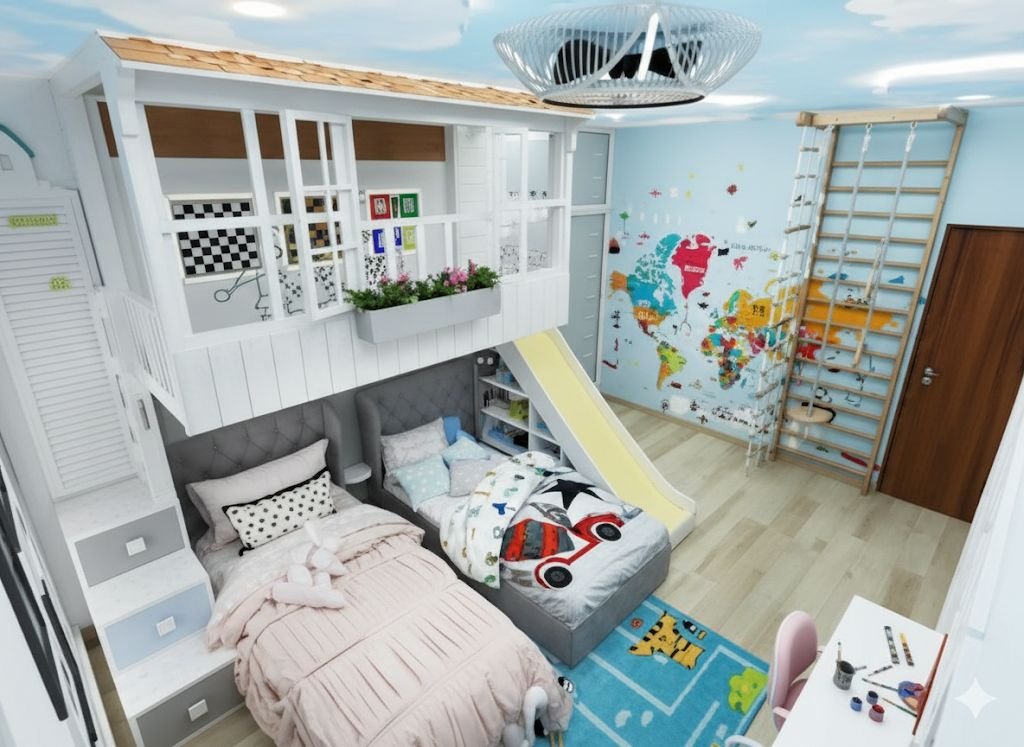



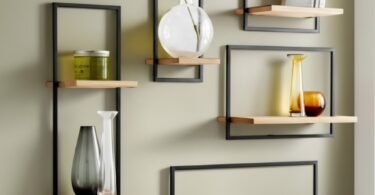
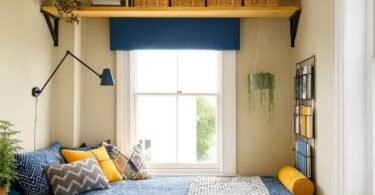
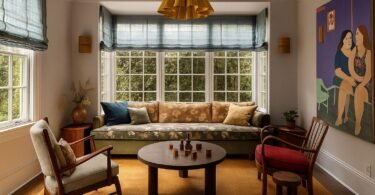

Leave a Comment